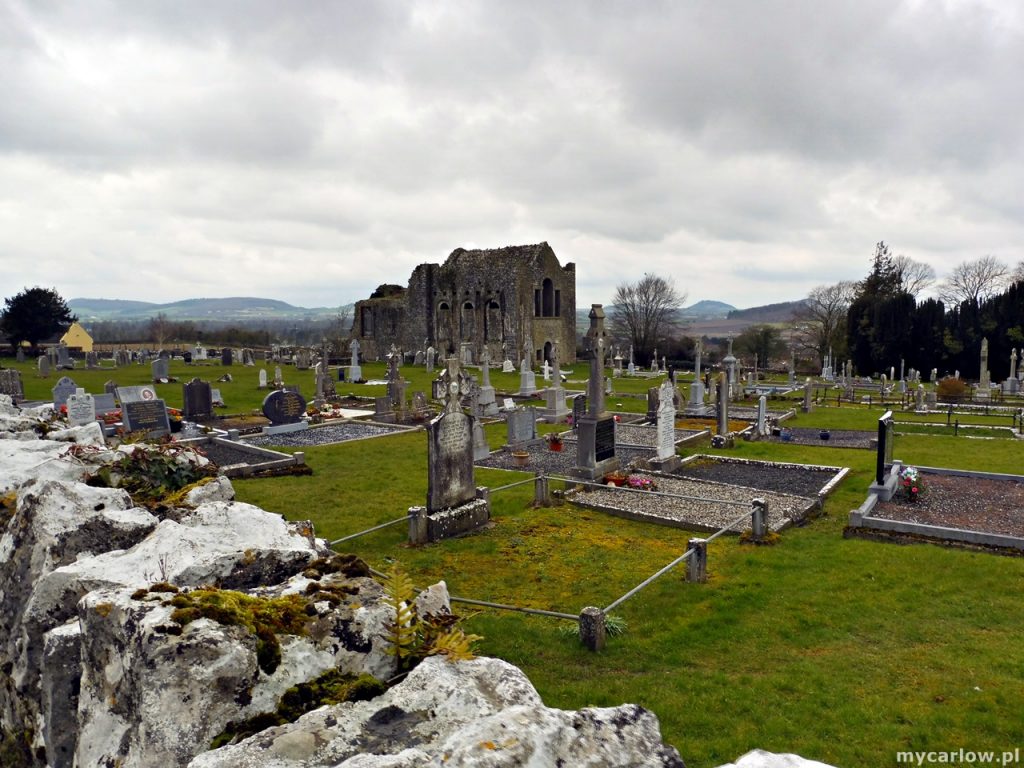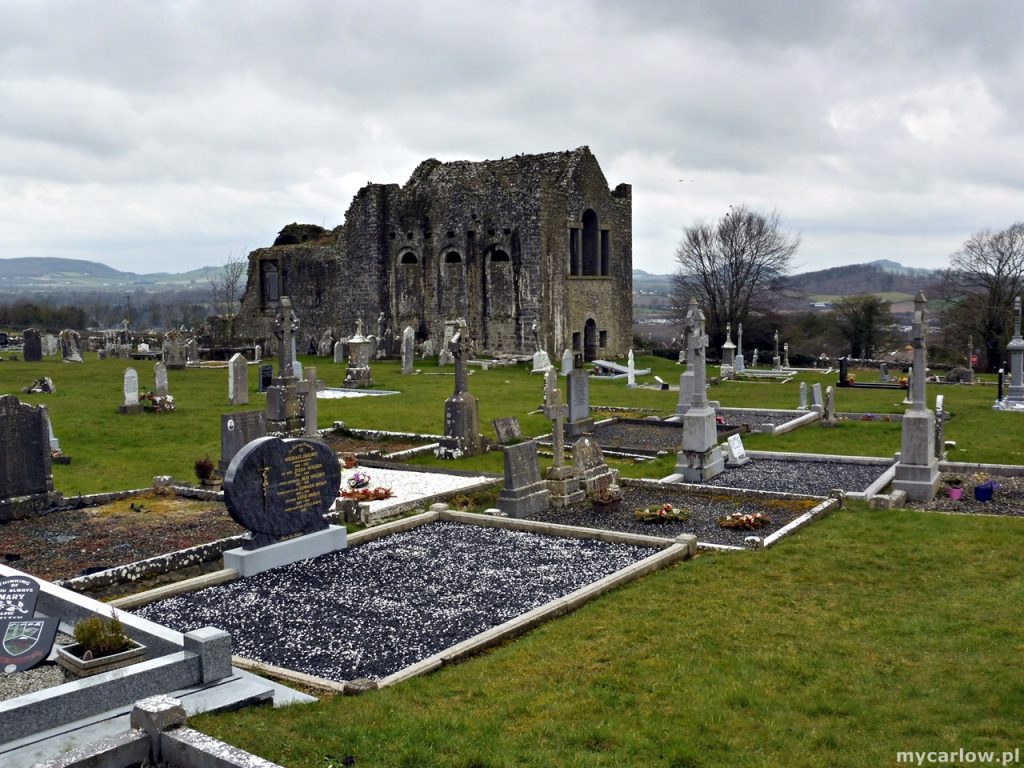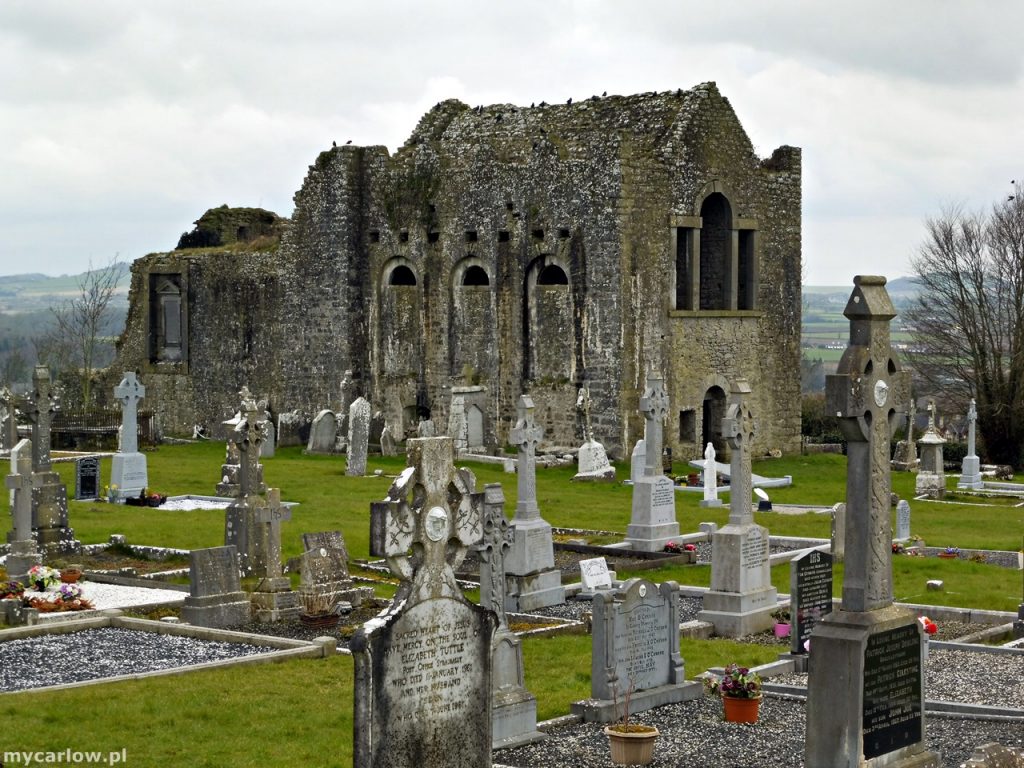
Driving from Carlow to Stradbally you will find the impressive ruins of Oughaval Church stand on a hill overlooking the flat surrounding lands of County Laois.
The church has quite an unusual shape. It is so unlike many of the church ruins that we normally find scattered around the countryside. Looking rather taller in height. The church stands on a low mound with a surrounding graveyard.
A monastery was founded at Oughaval in the late sixth century by St Colman mac Ua Laoighse, otherwise St Colman of Oughaval. He was a disciple of St Columba of Iona and of St Fintan, abbot of Clonenagh, and in the Martyrology of Tallaght he appears as Colman mac h Laighsi, with a feast day on 15 May.
After several years as a novice at Iona, Colman returned to Ireland. And he chose Oughaval as the site of a new monastic settlement. Exactly when this was founded is unknown. But it was a little before the repose of St Fintan in about 595. The foundation had ceased to function long before the Dissolution of the Monasteries under Henry VIII.
The Book of Leinster was kept at Oughaval for many generations and was then known as Lebor na Nuachongbála or the Book of Oughaval. In the early 18th century a 12th century stone roofed church survived, and the Cosbys of Stradbally Hall added a mortuary-chancel to it.
The site of the monastery can still be identified, and a burial ground there is still in use. However, there are now no remains of the original church or monastic building. As the stone from them was robbed in the 18th century to build a mausoleum.
Location of Oughaval Church:






